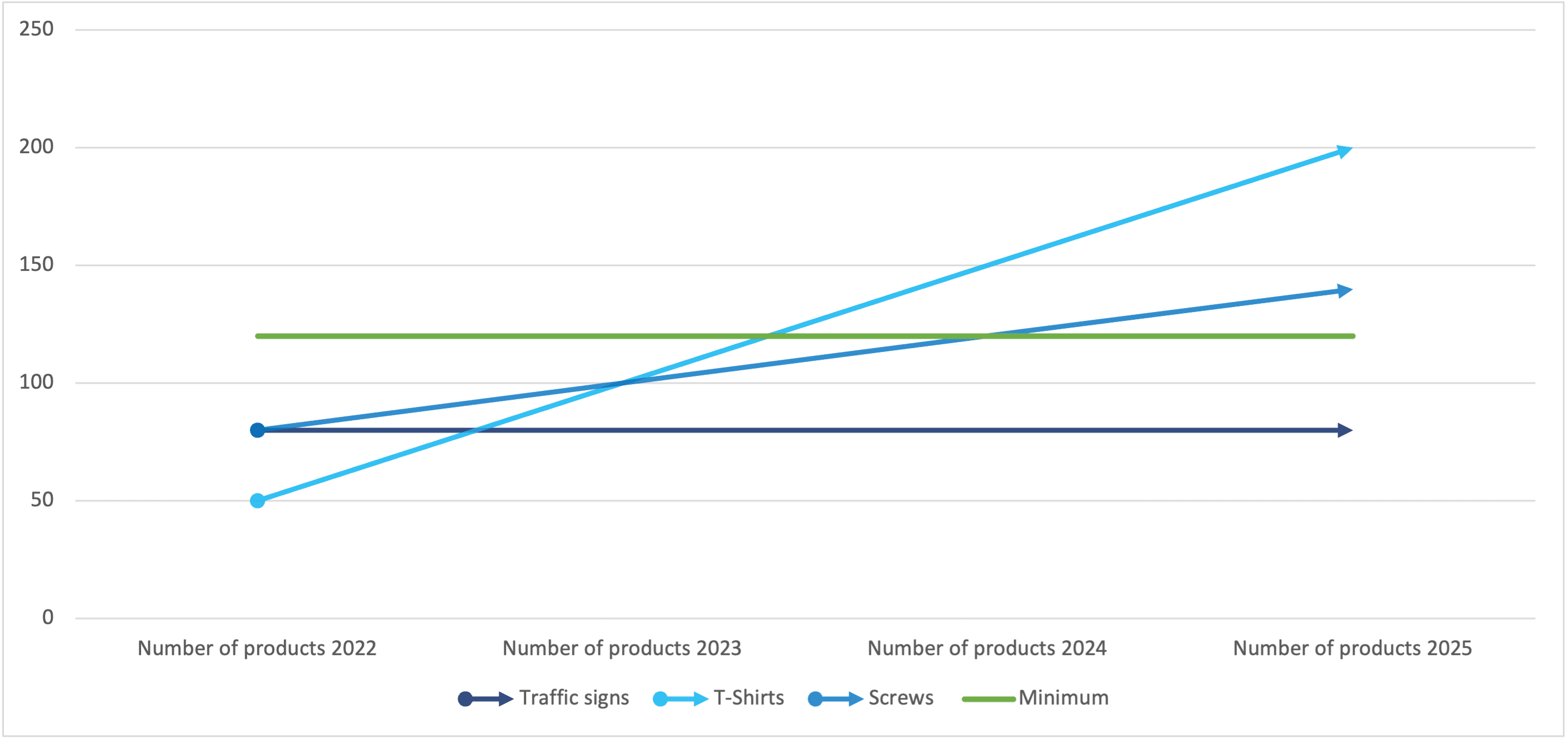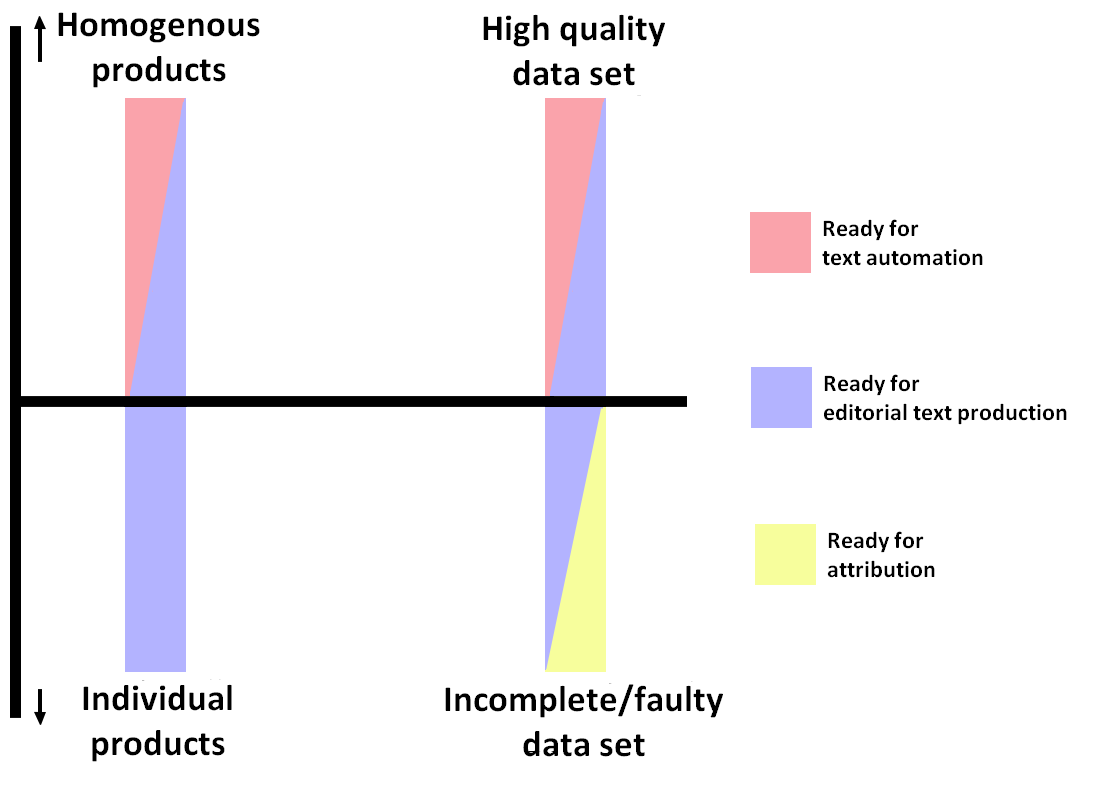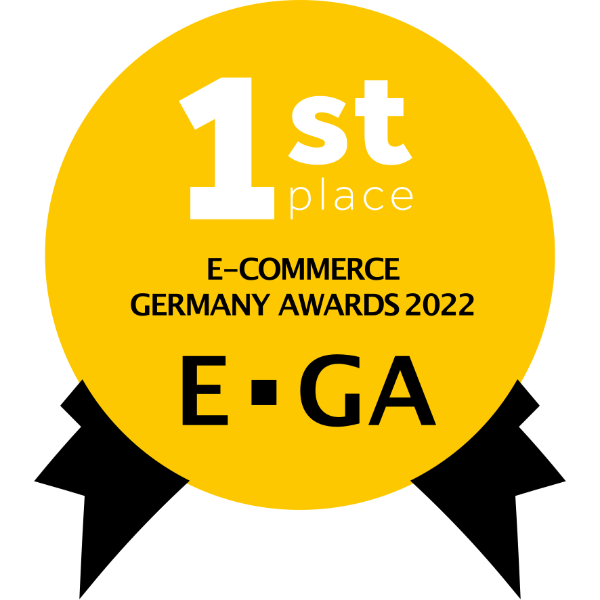
Automated or Editorial Content? - This is How You Make the Right Decision!
Automated content generation is becoming more and more widespread. Meanwhile, it is almost impossible to differentiate it from editorially written content, and it allows mass production of content.
Should we thus wave goodbye to manually written content? Well, not really! There are several criteria that can be used to decide whether automation based on natural language generation (nlg) might be the right choice, or whether editorial content might be better for you.
isa, a company based in Hamburg, Germany, are experts in the field of digital commerce and have been operating at the interface of digital and analog sales channels for more than 20 years.
Here are their top 3 criteria to decide between automated or editorial content.
Cost & Time Factor
These two factors are particularly important for most companies:
- How high are the costs? (or also: And what do I get for my budget?)
- What is the implementation time for the project?
For answering both these questions regarding manual and automated content generation, the first step is to compare the time and effort required for each method.
For a better overview, we'll use the example of "product descriptions". This is probably the most common use case in the field of e-commerce, and it is therefore easier to estimate the amount of time and effort involved.
In this example, the values used are rough estimates based on previous experience. They are primarily used for comparison purposes and could, in fact, differ in practice.
| Person Days | Number of manually-written texts | Number of automated texts |
| 1 | 30 | n.v |
| 2 | 60 | n.v |
| 3 | 90 | unlimited |
| 4 | 120 | unlimited |
| 5 | 150 | unlimited |
The time and effort required for editorial content is straightforward. As the number of required content increases, so does the number of person-days required. In the case of complicated products (e.g., televisions, mowers), copywriters can create around 10 pieces per day, while simple products (screws, T-shirts) can be written more often, at around 50 pieces per day. On average, there are 30 pieces of text per person day.
The number of articles plays a mostly minor role for automatically generated content. As soon as the construct has been set up, it can produce any number of different texts with good variation. The duration to establish such a construct depends on its complexity. Simple text trainings work with around 10 attributes and generate around 5 different statements. Completion takes about 3 person-days. A more complex training has about twice the number of statements and attributes used and takes 5 person-days. On average, therefore, an automated text is ready for production after 4 person-days.
The Range Size

This graphic compares the time and effort required for editorial and automatically generated content. The green area indicates at what number of texts the automation is worthwhile. In case of 90+ products, a simple text training with 3 PT expenditure would be already one step ahead. In the case of complex text training, the entry point shifts to 150+ products.
The amount of products or texts required are the first key indicators for determining if automated creation of content is worthwhile.
Calculate Sustainably!
When assessing a product range, however, it is essential to take into account any changes over the product range over the next few years.
At first sight, a product range with 50 products is not worthwhile for automated product descriptions. This can quickly change, however, in the case of a changing product range with a lot of new items (e.g., in the fashion sector) or a range that is still growing.

| Assortment | Number of products 2022 | Number of products 2023 | Number of products 2024 | Number of products 2025 |
| Traffic signs | 80 | 80 | 80 | 80 |
| T-Shirts | 50 | 100 | 150 | 200 |
| Screws | 80 | 100 | 120 | 140 |
| Minimum | 120 | 120 | 120 | 120 |
In the example above, we compare a static assortment (traffic signs) with two dynamic assortments (screws, T-shirts). On average, the green line indicates the number of articles for which automation makes sense.
All three product ranges appear to be a loss-making business at first glance, as the volumes are not initially worth automating. The T-shirts and screws, however, will amortize after 1-2 years and then turn out to be very profitable. As the traffic signs are a static assortment, there are no future changes to be expected there. Therefore, they are not worth automating and should be editorialized instead.
What About Quality?
With a complex training (estimated effort 5 PD) one gets texts that can hardly be distinguished from those written editorially in terms of their individuality. Yet, two conditions must be met for this to be possible:
- There is a well-maintained data basis (see also section 5, "The data basis").
- The creation of the training is performed assortment by assortment. If various assortments are displayed in one training (e.g. shoes together with outerwear), this decreases the individuality of the text.
An editorial written text is completely free from any of these conditions and can provide information beyond the maintained data (e.g. about the visual appearance of the product).

Costs of Individuality
How much does quality "cost"? The graphic illustrates this once again in a direct comparison with the number of products. It is important to note that the illustration only refers to a single use case (e.g., assortment).
The Data Basis

| Competence | |
| Time requirement | Technical criteria |
| 1 | Machine processability |
| 2 | List separation in the structure |
| 3 | Conformity of Units of Measure |
| 4 | Uniformity of grammatical form |
| 5 | Filling of attributes of a data set |
| Quality | Editorial criteria |
| 1 | Correct spelling of field values |
| 2 | Significance of the field values |
| 3 | Availability of attributes of a data set |
| 4 | Uniform data |
| 5 | Completeness |
| 6 | Common language |
| 7 | Scope of the data |
The prerequisites for automation are homogeneous products as well as a well-maintained database.
So far so good, but the question is, when is a data set high-quality enough to make it suitable for automatic content generation?
What Makes a Good Database
To answer this question, it is necessary to take a closer look at the data. For this purpose, we use our potential analysis:
Both technical and editorial data criteria are analyzed. A total of 12 points are evaluated with 1-4 points according to quality and are weighted differently. The machine processability, for instance, is rated particularly highly, as it is a particularly decisive criteria for data usability. The final result of the calculation shows a percentage, representing the data quality. The maximum percentage that can be achieved is 100 %. The minimum percentage defined by isa for automation is 64 % (= isa-action standard).
Therefore, through potential analysis, it is possible for us to determine whether automation is possible with the data available and/or how much effort is likely to be involved in preparing the data (data management).
See here the whole video about everything above mentioned:
Manual or Automated - Conclusion
Taking a look at the factors of budget, assortment size and database is a good way to make an initial assessment of whether automated creation is worthwhile for my content. All projects should be looked at individually.
An accurate and complete database is the key prerequisite for automated content generation. If the quality of my data is insufficient, however, it is not an instant rule-out criteria, as workarounds, data cleaning, and attribution can be performed via the budget lever.
BTW: isa supports not only in the creation of content but also in data cleaning and attribution. We will gladly analyze your data and discuss the further steps with you.


